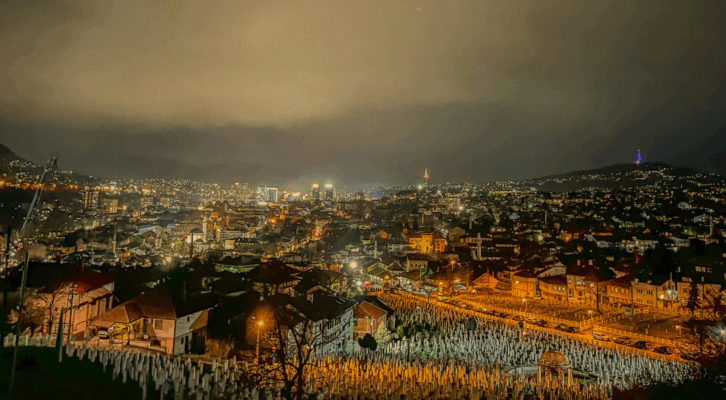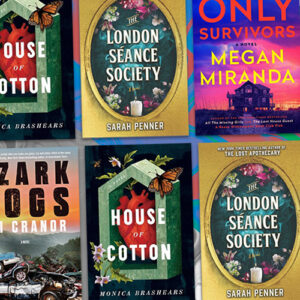Jacqueline Winspear is the bestselling author of the Maisie Dobbs series, two standalones, and most recently, The White Lady, in which an ex-spy is drawn back into the espionage game just after the end of the Second World War. She was kind enough to catch up with me over email to discuss historical fiction, enduring heroines, and her latest novel.
Molly Odintz: What draws you to historical fiction?
Jacqueline Winspear: It’s simple – I love history, so it’s a go-to place for me. I’m interested in how ordinary people have endured in extraordinary times, especially a time of war, and the emotions at play when people individually and collectively are under pressure from the events of their day.
MO: What should writers keep in mind when crafting an enjoyable yet detail-rich historical novel? How do you balance historical world-building and action?
JW: I don’t think I ever consider “balancing historical world building and action” – I’m not that prescriptive in my planning or as I write. If I had to consider some of those big planning questions, I’d run scared and never write again! So much of being a writer – a storyteller – is writing from the heart, interpreting within the framework of a story the subject matter that resonates on a personal level. In preparation for writing a novel, obviously I undertake a significant amount of research – then I let it go and just write my story from the heart. In that way I know I will stick to my basic rule of thumb, that “research” should be like an iceberg – only 7% of it visible above the surface. Writers are given leave to touch upon universal truths, regardless of reader age, culture, country of origin, etc., so historical detail is only there to support the story, to anchor it in its time and place. Yes, that means leaving behind 93% of what you’ve learned, but you have to trust that it will inform every word you write.
MO: What is the key to keeping a long-running series fresh?
JW: The key is not to embark upon a new novel with a mindset of “business as usual” – which I think would be really boring anyway. I’ve employed different approaches over the course of my novels – in Among The Mad there was a definite timeline listed in the narrative, to ratchet up the tension and render it more of a thriller, and I also included passages where I was “inside the head” of a man with mental illness rather than focusing only on the voice of Maisie Dobbs. In The American Agent I employed news reports from the time throughout the narrative, which anchored the book. With The Care and Management of Lies – which wasn’t a mystery – I focused alternate scenes set on the home front and battlefront of the Great War, because I wanted explore what was happening in both environments, and the disconnect between conflict from the perspective of those who wait at home, and the reality endured by soldiers. And in my broader work as a writer I also write articles on assignment on a range of subjects, because I believe “cross training” is important to keep all those creative muscles in robust working order!
MO: Why do you think audiences have so engaged with your heroines, beloved now to readers across the globe?
JW: I will be honest and say I don’t really know – but here are a few thoughts. One is that in both my series and my standalone novels I have moved characters through time, so readers are with them as they grow and change as a result of experiences. That’s very much true of the Maisie Dobbs’ series and indeed The White Lady. And I think to an extent there is a certain inspiration inherent in that approach – that these characters are moving through life encompassing all the daily challenges of work and responsibilities with friends and family etc – yet those challenges are impacted by the events of their day, which in my novels happens to be wartime. Then add the archetypal journey that is the foundation of any mystery – the fraught passage through chaos to resolution – and you have the potential for a compelling story that then continues on because readers want to know what happens next to the key characters. We are living in turbulent times, so a character set in the past who comes through that journey, not unscathed but still on their feet, could be seen as an inspiration, because we all deal with our daily round while sometimes coping very difficult life events, and against a backdrop of national and international news that’s often pretty grim with the potential to impact us directly.
MO: Can you talk a bit about your latest book? Your latest is a standalone. Do you need a break from series characters every now and again?
JW: It’s not so much needing a break as a desire to write another story that’s rolling around in my imagination and I cannot concentrate on anything else until I have a chance to write it. In addition to my two standalone novels, I’ve done that with a few short stories over the years, allowing other characters their time on the page.
My latest novel, The White Lady, is a thriller following the life of Elinor White, from a girlhood in occupied WW1 Belgium – where she is trained to kill – through WW2 when she joins the Special Operations Executive to be engaged in resistance operations in Belgium, and then on to post-war London, and her immersion into the world of organized crime – a knee-jerk reaction rooted in a the terrible events of 1944 which continue to haunt her.
The idea for The White Lady germinated when I was just three years old – those who have read my 2020 memoir, This Time Next Year We’ll Be laughing will know the story. My parents were living in a small farmworker’s “tied cottage” – a dwelling that went with my mother’s employment on the nearby farm as the bookkeeper for four farms, two of which were located amid the neighboring forest. Almost every day as we walked to the farm where the office was located – the farmer’s wife kept an eye on me while my mother worked – we would pass a woman walking toward us. She fascinated me, because we never seemed to see her until she was close to us, because her clothing appeared set for the season or the time of day. It was as if she were in camouflage. At first she only mumbled or nodded at my mother’s cheery “Good morning” but one day I chimed in, and she responded, smiling. As we walked on, entering the forest via a path leading to the farm, my mother leaned down to me and said, “She’s one of those women who parachuted into France, during the war.” It was when I said, “What’s a parachute?” that my mother realized this was probably a story for when I was older! But I never forgot her, probably because it sounded secret and children love secrets – and by the time I was about eight or nine, my curiosity had led me to learn more about women working undercover in WW2 Europe.
My interest in women’s wartime roles grew over the years, which led me to embark upon my series. However, I wanted to write a single novel that followed the passage of a woman’s life through two world wars, from girlhood to womanhood, and then beyond. WW2 was easy enough, as was post-war London and the war against organized crime. The missing link was how a girl would learn to fight in WW1. However, it was when I was doing background research for my novel, A Lesson In Secrets, that I learned about the work of La Dame Blanche (the White Lady) network in WW1 occupied Belgium. I knew I now had the missing link in Elinor’s story. La Dame Blanche was a resistance network comprising chiefly women and girls – because men of fighting age were already at the Front, and the Kaiser’s army had removed boys on the cusp of manhood right up to elderly men, and sent them to their deaths or work camps. Those girls and women were engaged in everything from sabotage to intelligence gathering, and if necessary, assassination. It is as a part of La Dame Blanche that Elinor is educated in the art of killing.
MO: Who are some of your biggest literary influences?
JW: I think “influences” is a tricky word, as there is no author who has influenced me as such, because the word “influence” suggests a desire to emulate in some way. At different times in my life I’ve focused on reading everything a certain author wrote – there was my “American authors” phase, when I read everything by F. Scott Fitzgerald, Ernest Hemingway and John Dos Passos, for example. Then there were the blockbuster years, a time when ever bestseller that grasped my attention seemed to be a big fat novel spanning lifetimes. I went through a Leon Uris phase which, curiously, was interspersed with a re-reading of the classic women writers (Austen, the Brontes, George Elliot). I love the way some writers could weave compelling family sagas – Elizabeth Jane Howard or Rosamund Pilcher for example. One writer I have admired enormously is Susan Howatch, especially the later “Starbridge” series of novels focusing on the Church of England – I loved the way she combined a depth of academic research with stellar storytelling and a killer wit. Not many writers can weave that level of scholarship with humor along with a piercing insight into the human condition to create fiction that is entertaining as well as instructive and thought provoking. As writers of fiction, we must not forget that we are in the entertainment industry!
MO: Last but not least: you’re casting the ideal adaptation of your series heroines. Who plays Maisie Dobbs?
JW: It’s Elinor White who is my focus right now – and that’s a timely question, because I’ve just indulged myself with some “fantasy casting” for The White Lady in one of my pre-publication newsletters – here are my choices.
I would love to see Emily Blunt in the role of Elinor White – she would be wonderful.
Regarding Maisie Dobbs – I’ve been asked the casting question every year for the past twenty years – this year marks the twentieth anniversary of the series! However, it always seemed that my favored choice of actress soon aged out of a range suitable for casting. At this point it would have to be someone who is not a big name, yet one who is familiar to audiences, so my choice would be a known actress who is not yet a massive star. My current choice is Anna Popplewell. She’s now 34, but most filmgoers will remember her as the older sister, Susan Pevensie in the Chronicles in Narnia series. She has the perfect look – a certain serious demeanor laced with the promise of lightness and a wry humor.
***


















